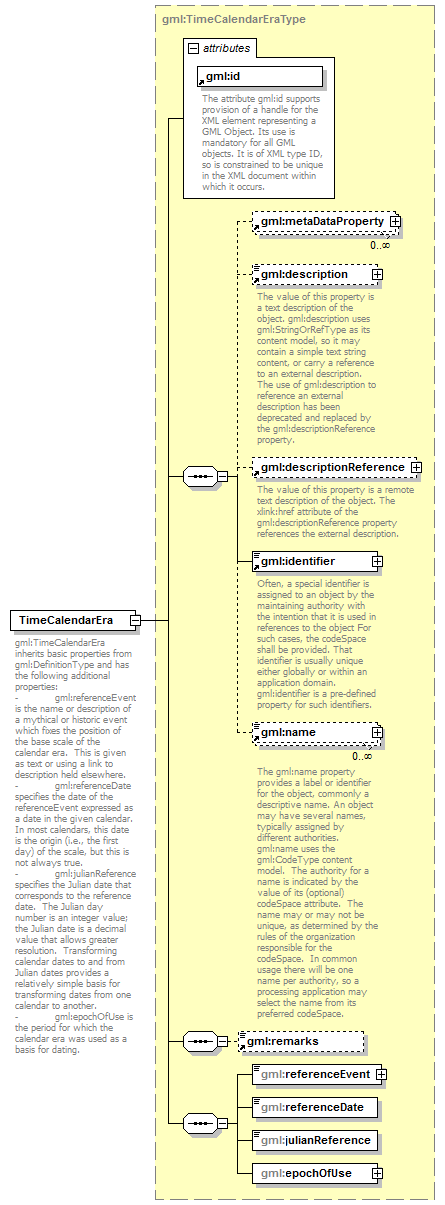| diagram |
 |
| namespace |
http://www.opengis.net/gml/3.2 |
| type |
gml:TimeCalendarEraType |
| properties |
|
| children |
gml:metaDataProperty gml:description gml:descriptionReference gml:identifier gml:name gml:remarks gml:referenceEvent gml:referenceDate gml:julianReference gml:epochOfUse |
| attributes |
| Name | Type | Use | Default | Fixed | annotation | | id | | required | | | | documentation | | The attribute gml:id supports provision of a handle for the XML element representing a GML Object. Its use is mandatory for all GML objects. It is of XML type ID, so is constrained to be unique in the XML document within which it occurs. |
|
|
| annotation |
| documentation | gml:TimeCalendarEra inherits basic properties from gml:DefinitionType and has the following additional properties:
- gml:referenceEvent is the name or description of a mythical or historic event which fixes the position of the base scale of the calendar era. This is given as text or using a link to description held elsewhere.
- gml:referenceDate specifies the date of the referenceEvent expressed as a date in the given calendar. In most calendars, this date is the origin (i.e., the first day) of the scale, but this is not always true.
- gml:julianReference specifies the Julian date that corresponds to the reference date. The Julian day number is an integer value; the Julian date is a decimal value that allows greater resolution. Transforming calendar dates to and from Julian dates provides a relatively simple basis for transforming dates from one calendar to another.
- gml:epochOfUse is the period for which the calendar era was used as a basis for dating. |
|
